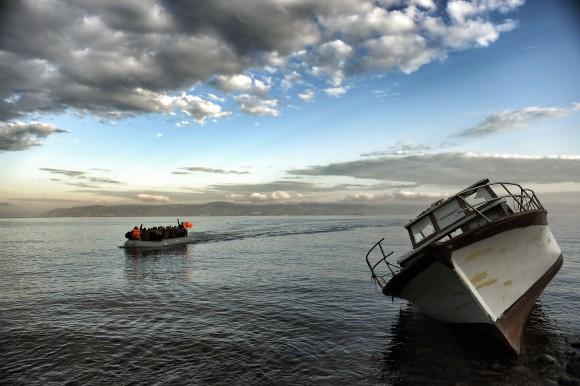The latest refugee deaths in the Mediterranean—700 people drowned when the overcrowded fishing vessel in which they were travelling from North Africa capsized of the coast of Libya follows a similar tragedy last week in which 400 people perished.
In October 2013, more than 360 people—mostly from Eritrea—lost their lives when their boat caught fire and sank off the coast of the Italian island of Lampedusa. In September 2014 more than 500 migrants were deliberately killed at sea. The attack allegedly occurred after the migrants refused to board a smaller boat in the open water and the traffickers reportedly laughed as they drowned, hacking at the hands of those who tried to cling to the wreckage. Witnesses report that as many as 100 children were on board.
In the absence of official records, or bodies to count, it’s hard to say exactly how many people have died trying to cross the Mediterranean. The International Organization for Migration (IOM) released a report in late September 2014 putting the number at 3,072, accounting for 75 percent of worldwide migrant deaths. But with so many lost at sea or along the way, the real figure could be far higher.
Risky Business
If you listened to some media reports this week you would be forgiven for thinking that increased migration to Europe was the result of “good weather” rather than increasing governmental instability and violence. The motivations and aspirations of migrants themselves are largely absent.
Migrants are presented as victims, “illegals” and objects of control. The “solution” is technical, bureaucratic and framed as an issue of migration management. Little attempt is made to explain why thousands of men, women and children would risk their lives to get on an overcrowded boat to cross a dangerous sea or what their hopes and aspirations might be. Migrants’ lack of agency is reinforced by stories of agents, smugglers and traffickers who dupe them into making the journey to Europe.
Migration looks very different when seen from the perspective of migrants themselves. Although “migrants” are represented as a homogeneous group, there are significant differences in the motivations, experiences and aspirations of those who travel to Europe.
For economic migrants, the decision to leave is generally a conscious choice by relatively well-off individuals and households to enhance their livelihoods. Most migrants are not the poorest of the poor. Clandestine travel costs anywhere from $5,000–$35,000. Many of these migrants are petty entrepreneurs who sold their businesses or property in order to pay for the expensive trip.


